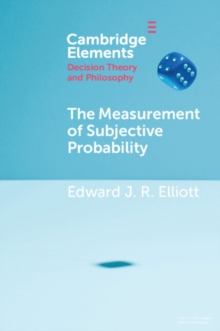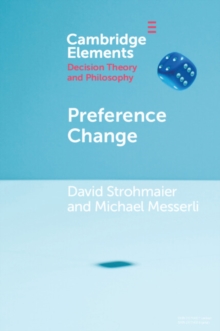
The History and Methodology of Expected Utility Paperback / softback
by Ivan (Universita degli Studi dell'Insubria, Italy and Baffi Carefin, Universita Bocconi, Mi Moscati
Part of the Elements in Decision Theory and Philosophy series
Paperback / softback
Description
This Element offers an accessible but technically detailed review of expected utility theory (EU), which is a model of individual decision-making under uncertainty that is central for both economics and philosophy.
The Element's approach falls between the history of ideas and economic methodology.
At the historical level, it reviews EU by following its conceptual evolution from its original formulation in the eighteenth century through its transformations and extensions in the mid-twentieth century to its more recent supersession by post-EU theories such as prospect theory.
In reconstructing the history of EU, it focuses on the methodological issues that have accompanied its evolution, such as whether the utility function and the other components of EU correspond to actual mental entities.
On many of these issues, no consensus has yet been reached, and in this Element the author offers his view on them.
Information
-
Only a few left - usually despatched within 24 hours
- Format:Paperback / softback
- Pages:75 pages, Worked examples or Exercises
- Publisher:Cambridge University Press
- Publication Date:31/08/2023
- Category:
- ISBN:9781009198264
£17.00
£16.65
Information
-
Only a few left - usually despatched within 24 hours
- Format:Paperback / softback
- Pages:75 pages, Worked examples or Exercises
- Publisher:Cambridge University Press
- Publication Date:31/08/2023
- Category:
- ISBN:9781009198264










